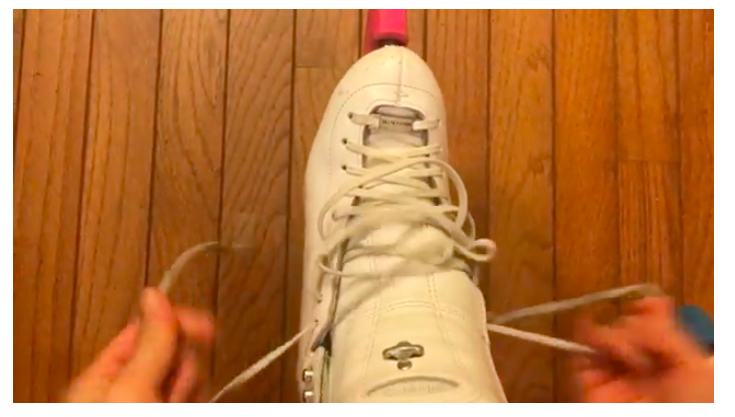As a follow-up to last week's post, I want to specifically address the proper skating attire for girls because I see too many of them in their skating dresses and they look so uncomfortably cold. I'm not sure if they want to or whether their moms want them to wear the dresses. There is no requirement to wear a skating dress for practice or group instruction unless your child insists. I strongly feel staying warm and comfortable are more important that looking pretty on the ice. Many young female students from my skating club wear popular skating apparel tops and bottoms from Chloe Noel, Mondor and Ivivva (youth brand of Lululemon). You can find the Chloe Noel and Mondor athletic clothings in the pro-skating shop at your local rink or online, (https://figureskatingstore.com/skating-apparel/) and Ivivva at your local retail store. I've also seen skating apparel sold in dance shops.
When I go to practice, I generally wear tops from Lululemon. They're easy to move around in and I find them form fitting which makes it easier for my coaches, particularly my dance coach, to see my body alignment so they can give me advice on my technique. When I was young, my mom use to make me wear Under Armour turtlenecks because she is so deathly afraid of the cold and thinks I would freeze on the ice. However, my mom can't seem to understand that I like the cold and being cold on the ice was the farthest thing I was feeling especially when I was sweating profusely from working so hard on the ice. Also, I hated wearing turtlenecks because I felt too restrictive in my movements and felt I was being strangled. Nowadays, I generally wear a short sleeve shirt on the ice even during winters which drives my mom still crazy. I also always wear my black Mondor skating pants for practice. I don't really like those wacky colorful designer pants because I feel it attracts too much attention on the ice and prefer not to be noticed and observed especially when I fall on the ice. My most important advice when purchasing skating clothes is to find appropriate clothing that would keep you warm in a cold ice rink.
However, if your daughter insists on wearing a skating dress for practice because it makes her feel pretty then make sure you layer her up and have her wear a sweater or a snug sweatshirt or jacket over her dress. Some of the more popular brand practice dresses are Jerry's, Mondor and Chloe Noel. Both Mondor and Chloe Noel make high performance tights which can be worn with the dresses and the tights are thick but also soft and comfortable to keep legs warm. These companies are leaders in the manufacturing of ice skating tights in the US. They offer different color tights ranging from tan, suntan and caramel colors and some even come with a crystal appliqué. There's also a huge selection of skating tights - footed, footless and over the boot, and all depends on your daughter's preference. The footed tights fit like pantyhose and the footless, not as popular, will require socks or other hosiery when wearing skates. Most skaters prefer over the boot tights because it gives them a longer leaner look to their legs. Another big benefit is that it holds the laces in place and won't get unlaced. It also prevents potential accidents of skaters hooking their boots together when skating. The only wearing over the boot tights is that there's a tendency for holes to form near the toes because they're worn also the skates and have contact with the skate blades. You will also need to wear socks or other hosiery when wearing this type of skating tights.
Please remember to keep an extra pair of tights in your bag in case you accidentally tear it.
Another important thing for girls to wear are hair ties so that the hair is not hanging over your daughter's eyes and they can see clearly ahead and won't be distracted when learning to spin or jump. Girls can either tie their hair back or put it up in a ponytail. If the hair is very long then maybe also consider braiding it or putting it in a bun.
Please remember dressing properly will help you skate better!






